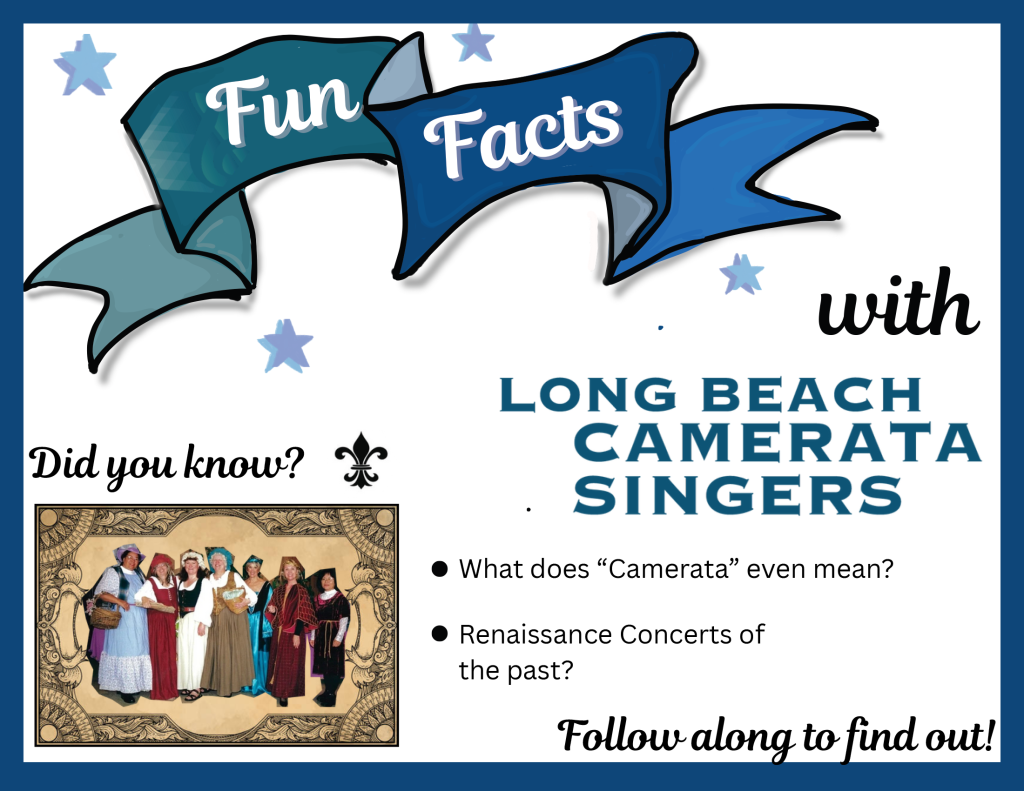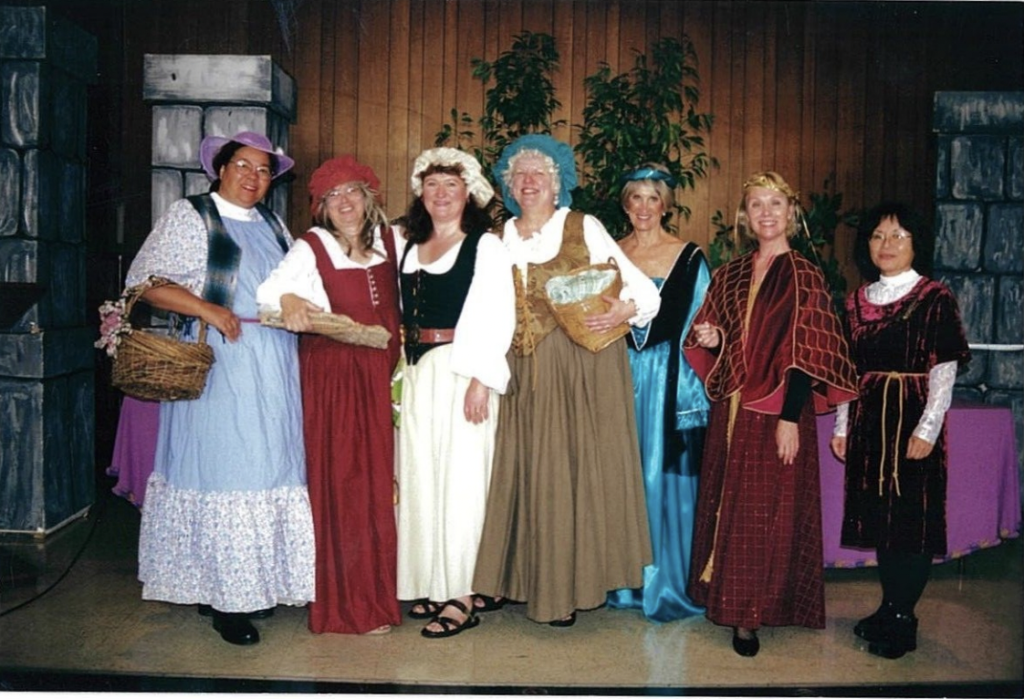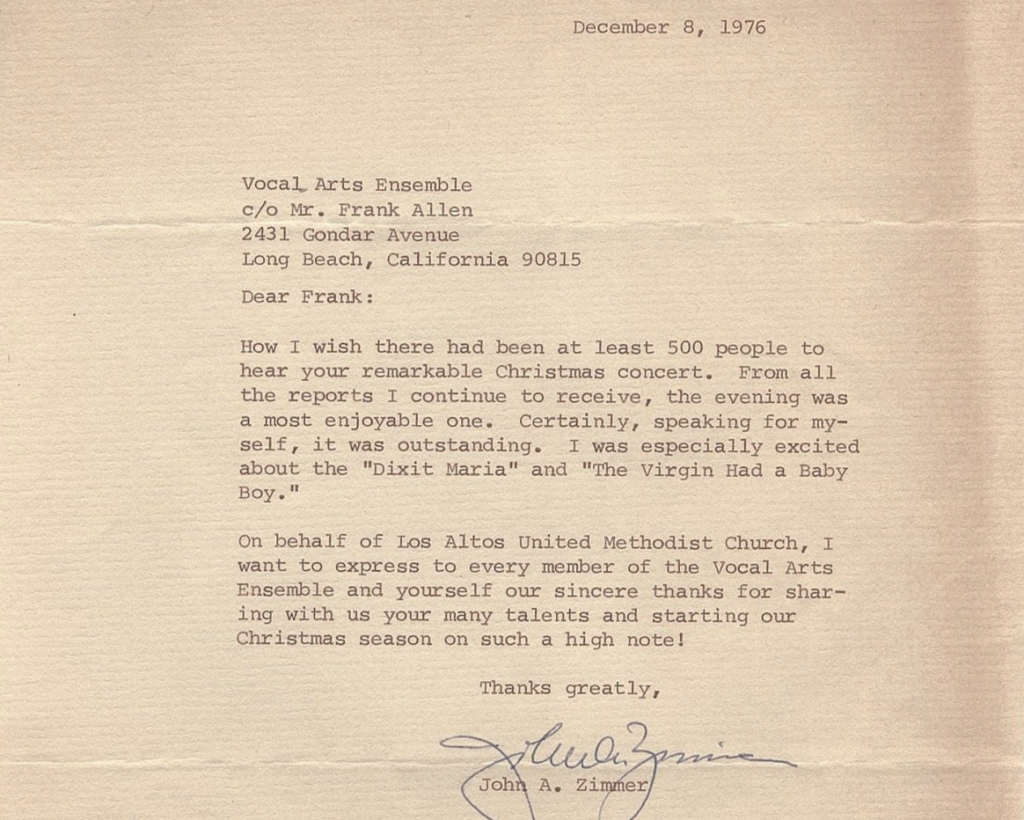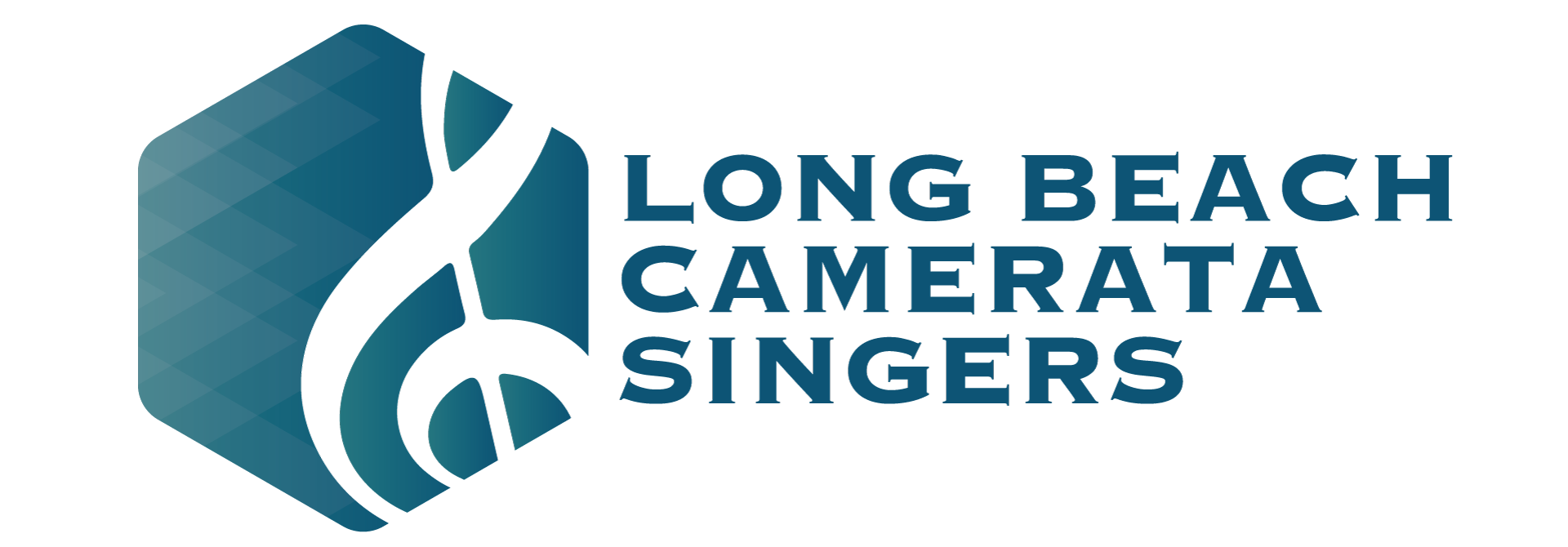By Julia Goldman

Graphic by Julia Goldman
As mankind first stepped on the moon on July 20, 1969, Camerata sang! Known as the Vocal Arts Ensemble then, the ensemble sang that day at the Los Angeles County Museum of Natural History and was featured on KFAC on-air radio broadcast.
A 20th century jam packed with change, America and Camerata have experienced many historic “firsts” over the past 60 years. Follow along to learn intriguing tidbits and lore surrounding Camerata, from the meaning of its namesake to the story and impact of its lasting traditions.
Community and traditions
In the ‘90s, under former Artistic Director David Wilson’s direction, Camerata concerts often offered free childcare to parents visiting the shows.

Photo caption: Listed at the very bottom of the “Clearly Camerata” concert flyer are ticket prices and the note that child care is available throughout the performance. The concert was held May 31, 1998. Photo credit: Long Beach Camerata Singers Archive
Beyond providing entertainment and ease to parents during concerts, Wilson also enriched the greater Long Beach community by founding and contributing to a number of educational artistic opportunities for children.
One includes Wilson’s creation of the Long Beach Unified School District Honor’s Choir, which selected the year’s top 50 choral students to rehearse and perform under Wilson himself. The ensemble is still active to this day!
So, what does “camerata” even mean?
The word Camerata means “room” or “chamber” in Italian. It originates from the Latin word, “camera,” under the same meaning, and it often referred to the gathering of a society or club that met in a room.
The word is famously associated with a group of musicians, poets and humanists known as the “Florentine Camerata” that met throughout the Renaissance Florence rebirth of the late 16th century. The group, which sought to extract expression from speech and song within music, is considered by some to have founded the genre of operatic singing.

Photo caption: Dressed up in costume, members of Long Beach Camerata Singers’ pose for a Kodak disposable camera during the Renaissance Revelry II concert in May of 2000. Photo credit: Long Beach Camerata Singers Archive
Renaissance Revelry
In the theme of its namesake, did you know that Camerata used to perform a Renaissance concert series?
Known as Renaissance Revelry, the series lasted for a few years in the late ‘90s – early 2000s. Performing choral evensong and revels with the spirit of “chapel, court and countryside,” Renaissance Revelry sought to bring alive a “royal court fest with costumed singers, period instruments… and delicious deserts.”
Camerataerie
Throughout the 2000’s, Camerata had their own newsletter for members, titled Cameraterie. Addressed to “my lords, ladies, wenches, chimney sweeps, town criers, liverly boys, etc,” the newsletter was written in a playful tone and contained schedules, reminders, shoutouts, zodiac signs and a heavy encouragement for members to sell tickets.
Past wishes into current:
In 1976, an audience member sent former Artistic Director Frank Allen a letter, wishing that an audience of at least 500 had heard the most recent Christmas concert. Before adopting its current name, Camerata was previously known as the Vocal Arts Ensemble and was founded by Frank Allen in 1966.

Photo caption: Preserved to the current day, this scanned copy of Joan A. Zimmer’s letter to Frank Allen expresses delight towards the Vocal Art Ensemble’s most recent Christmas concert in 1976. Photo credit: Long Beach Camerata Singers Archive
Since then, Camerata Singers has seen audiences of over 600 regularly attending their Handel’s Messiah concert in December, which will be celebrating its 17th year of production this 2025 season.
